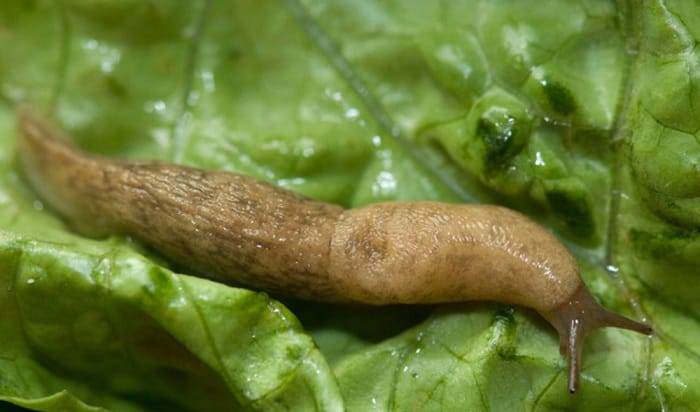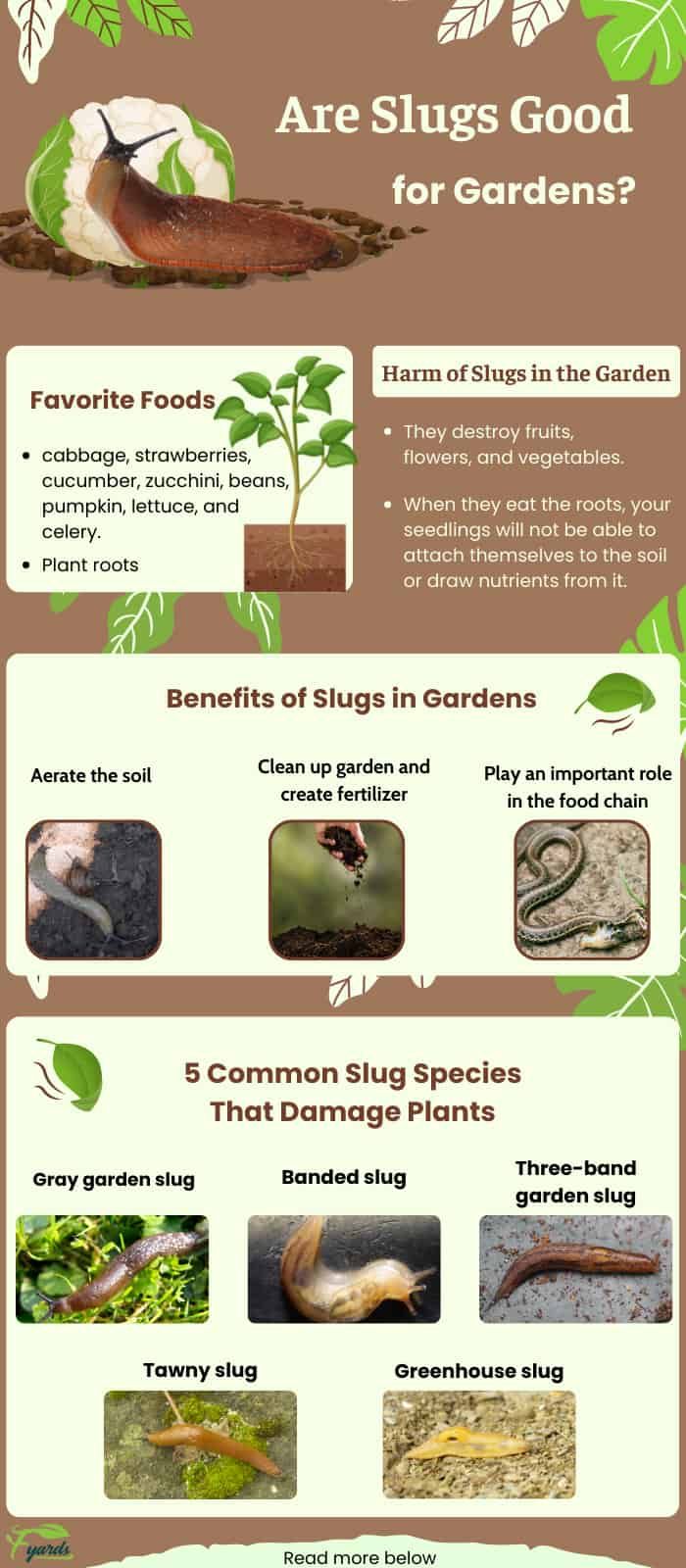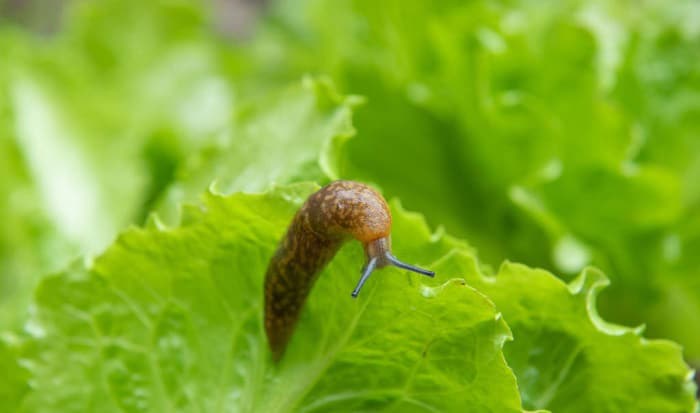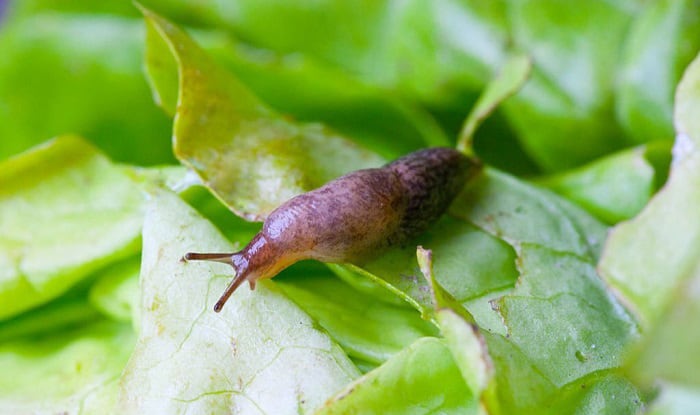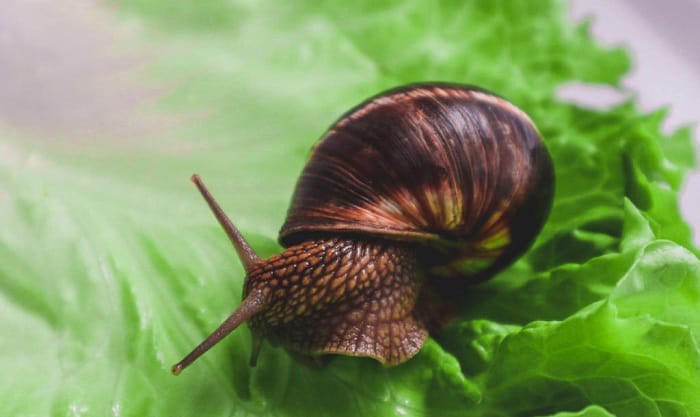Are slugs good for gardens? If you grow your vegetables, chances are you’ve asked yourself this question. With a well-managed population, slugs might be good for soil nutrition.
That said, although these mollusks can have certain benefits in horticulture projects, they are overall harmful to the development of plants. Learn the reasons why below.
Table of Contents
Are Slugs Bad for Plants?
Yes, slug damage to plants can be severe. These slimy creatures will eat fruits, flowers, and vegetables.
When this happens, you’ll end up with tattered plants that look unappetizing, which is very disappointing if you grow your own food. Moreover, if slugs eat leaves frequently enough, your shoots may dwindle to nothing.
To make matters worse, plants are often trashed due to cosmetic reasons. Therefore, even if your vegetables manage to survive being chewed entirely, you won’t be able to sell them to supermarkets.
In the worst cases, what makes slugs dangerous to the development of gardens is their consumption of plant roots. Without roots, your seedlings won’t be able to attach themselves to the earth or absorb nutrients from it.
Some of the slugs’ favorite foods are cabbage, strawberries, cucumber, zucchini, beans, pumpkin, lettuce, and celery. If you grow one of these plants, I recommend setting up mollusk deterrents in your garden.
Benefits of Slugs in Gardens
Now that we’ve discussed what makes slugs bad for your lawn, you may also want to know their benefits.
1. Aerate the soil
During summer, slugs will hide in the soil, creating pockets that aerate it. When such a thing happens, drainage will improve, and water and fertilizers will soak into the earth more easily.
Plus, aeration reduces the compaction of soil, so you may not need to perforate the ground with an auger. How convenient is that?
2. Clean up garden and create fertilizer
Believe it or not, slugs eating plants has positive effects, too, as long as the plants are already dead. Gardens naturally have a lot of waste, from animal remains, debris to fallen leaves.
Slugs will consume all this detritus and turn it into a nitrogen fertilizer, which aids the development of fruits and foliage. The results are a cleaner garden and healthier soil.
3. Play an important role in the food chain
One of the most significant benefits of slugs is their part in the food chain. Many species seek out these mollusks as a food source, from birds and beetles to turtles and snakes.
If we exterminate slugs and markedly reduce their population, the ecology of our planet will be affected. Many animals will have to look elsewhere for sustenance and may not find it.
Are All Slugs Bad for the Garden?
No, not all of these mollusks destroy gardens. For example, only nine out of forty-four slug species in the UK eat plants.
Hence, if you see slugs in yard, don’t panic just yet. Try to identify which breed they belong to and whether it’s good or bad. Below is a list of common slugs harmful to plants.
1. Gray garden slug
A gray garden slug is often creamy or gray in color. If you disturb this pest, its slime will change from being transparent to milky, so this is one strategy to recognize this species.
Gray garden slugs are prone to laying eggs during the fall when the weather is not too cold. If you spot one of these creatures at this time, it’s best to remove them to avoid a possible infestation.
2. Banded slug
This breed is brown or yellow-gray in color and is very common in the United States. It loves to feed on ivies, pepper plants, and carnations. Unlike the gray garden slug, its mucus is transparent, even if you unsettle it.
3. Three-band garden slug
Three-band garden slugs are distinguishable by the two dark lines on their bodies and their colorless mucus. If you see three-band slugs in potted plants, especially flowers, remove these mollusks right away before they destroy your ornamentals.
4. Tawny slug
Tawny slugs are yellow or pink with an orange tint. They may be seen in the northeast, south, and Midwest of the United States and will eat both dead and living plants.
5. Greenhouse slug
Greenhouse slugs have gray or black bodies and a length of up to 50 mm or 2 inches. This species likes to eat herbs, vegetables, and plant roots, so gardeners should remove them from yards.
Interestingly, greenhouse slugs die after laying eggs, so you may not have to deal with these mollusks for long, provided you get rid of their offspring.
Conclusion
Are slugs good for gardens? The answer is no. People should regularly check for the presence of slugs and remove them from yards as quickly as possible. These creatures like wet and cool areas, so pay special attention to those places. One should take note of any slimy trails as well.
We hope this article was helpful to you. Thanks for reading.
Read more:

Hi, I am William – Floridayards’ digital content creator. My job is to find answers to all your concerns with thorough research and our team’s expert advice. I will also bring you honest reviews on the best products and equipment for raising your beautiful garden. Please look forward to our work!


